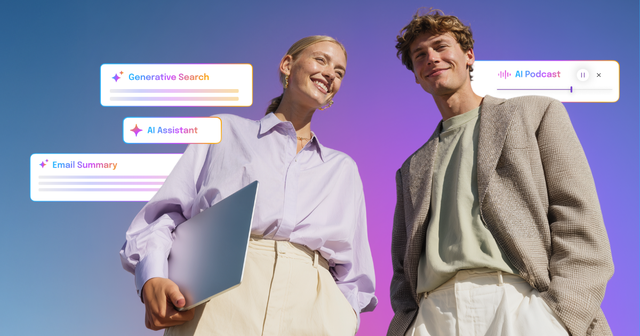The top 6 takeaways from Unleash 2025
What we learned about the future of employee experience from Europe’s leading HR conference
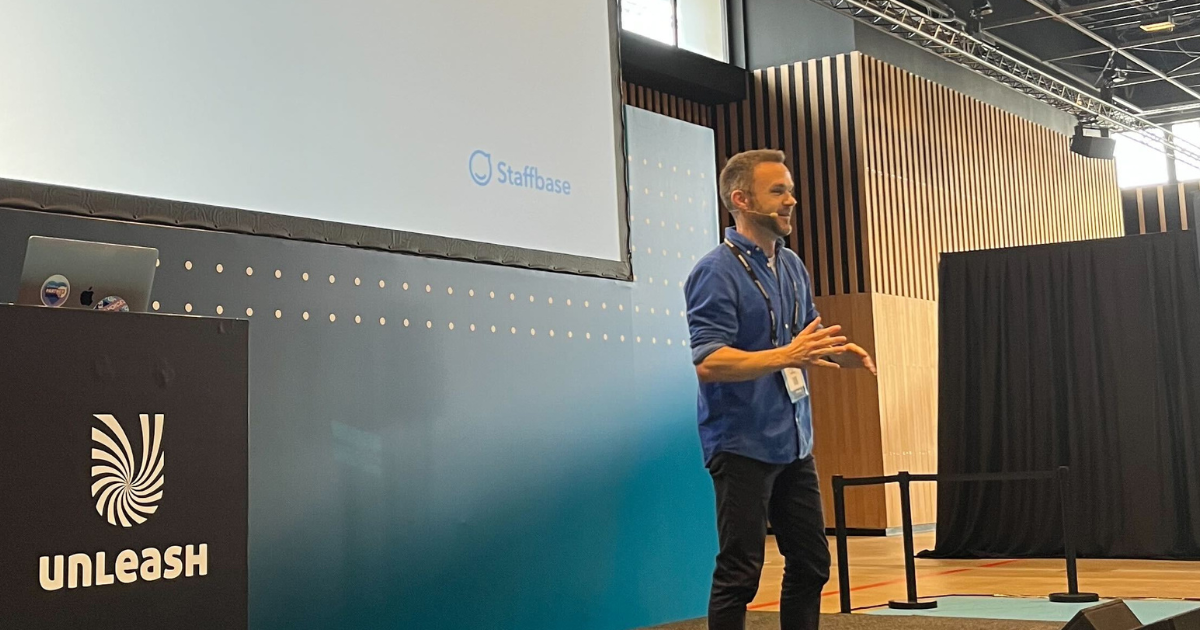
At Unleash Paris 2025, the future of employee experience took center stage — and so did AI. But while the hype is real, so are the challenges. The conference featured powerful keynotes, candid case studies, and hallway conversations that revealed where HR is heading — and what might hold it back. Here's what we took away from the stage and beyond.
1. AI is reshaping employee experience — but it's still fragmented
From vendor demos of AI-enhanced HR portals to case studies showcasing conversational interfaces and unified service hubs, Unleash 2025 offered a glimpse into the evolving digital workplace. Yet many attendees walked away with the same realization: while individual systems are getting smarter, the overall employee experience remains fractured.
As one keynote put it, “Smarter systems, same broken experience.”
AI is being deployed across platforms, but not across the employee journey. Tools are getting smarter, but employees are still being asked to navigate fragmented systems, redundant channels, and conflicting information. These disconnected experiences undermine trust, reduce productivity, and ultimately stall the impact of transformation efforts.
In his spotlight session, Staffbase co-founder Frank Wolf introduced the concept of EX³ — a strategic framework that treats employee experience as a connected ecosystem. Rather than treating HR, internal communications, and AI as separate tracks, EX³ brings them together to deliver clarity, connection, and context at scale.
 The EX³ model: connecting HR, communications, and AI. For the first time, AI makes it possible to bridge the gap between people strategy, messaging, and technology, creating a unified employee experience.
The EX³ model: connecting HR, communications, and AI. For the first time, AI makes it possible to bridge the gap between people strategy, messaging, and technology, creating a unified employee experience.
It’s a model grounded in the reality we hear from our customers every day: to truly move the needle on engagement and trust, we have to stop thinking in silos and start designing experiences that feel coherent and human no matter what platform they’re delivered through.
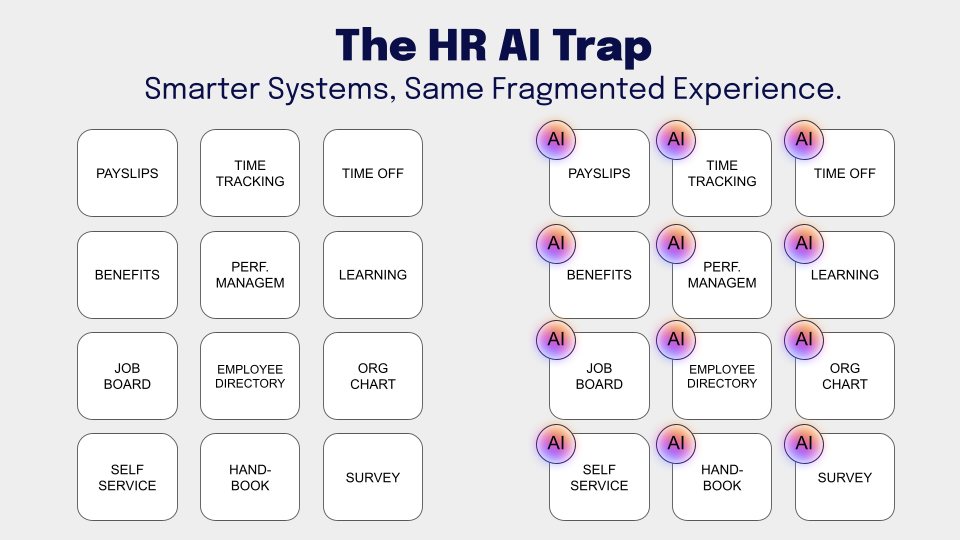 Smarter silos are still silos. Adding AI to disconnected systems doesn’t fix the fragmentation of the employee experience, it just makes each tool a little smarter in isolation.
Smarter silos are still silos. Adding AI to disconnected systems doesn’t fix the fragmentation of the employee experience, it just makes each tool a little smarter in isolation.
2. Storytelling is the missing link in AI transformation
AI adoption is not purely a technical evolution; it demands cultural change. And cultural change hinges on trust. That’s where storytelling comes in.
“The number one skill humans need in the age of AI is storytelling.”
Scott Galloway, Professor of Marketing at NYU Stern and author of The Four
Despite widespread agreement on the importance of clear communication during transformation, few sessions focused on how HR teams can build the skills and structures needed to lead with narrative. And yet, as AI accelerates change across every part of the employee experience, trust and transparency are becoming make-or-break capabilities.
This is where communication leaders can play a transformative role. At Staffbase, our work with hundreds of enterprise organizations has shown that storytelling rooted in authenticity, clarity, and cultural context isn’t a “soft skill.” It’s foundational to any successful transformation.
“Building stories about how AI is being successfully used is critical to building employee trust.”
Amy Coleman, Executive Vice President, Chief People Officer, Microsoft
3. Frontline workers are still being left behind — addressing digital equity is key
The frontline gap — long acknowledged but rarely prioritized — remains unresolved. While the tools for automation and AI are improving, they are still designed primarily for desk workers.
One of the most compelling case studies came from IKEA, which shared their efforts to provide frontline workers with access to AI guidelines and the psychological safety to question them. Still, many attendees acknowledged they are struggling to find a clear solution for reaching frontline staff.
This disconnect highlights a growing opportunity: ensuring every employee, not just the well-connected few, can access the tools and information they need, is a strategic imperative. Staffbase has been working with organizations for over a decade to address the challenge of digital equity — helping companies bring frontline employees into the digital conversation with inclusive, mobile-first communication strategies. The results are measurable: improved reach, higher engagement, and stronger alignment across the entire workforce.
Learn more about the Staffbase Employee App →
4. Conversational HR is gaining traction — but proactive push is still critical
A central theme at Unleash was the rise of conversational interfaces. From KPN’s bold vision that 80–90% of employees won’t touch a traditional interface in two years, to demos of chat-driven knowledge hubs, it’s clear that “just ask” is replacing “just search.”
But that solves only half the problem.
In his keynote, How AI Is Transforming Employee Experience in the ChatGPT Era, Frank Wolf offered a critical insight: employees can’t ask about what they don’t know about. And that’s where the real risk lies.
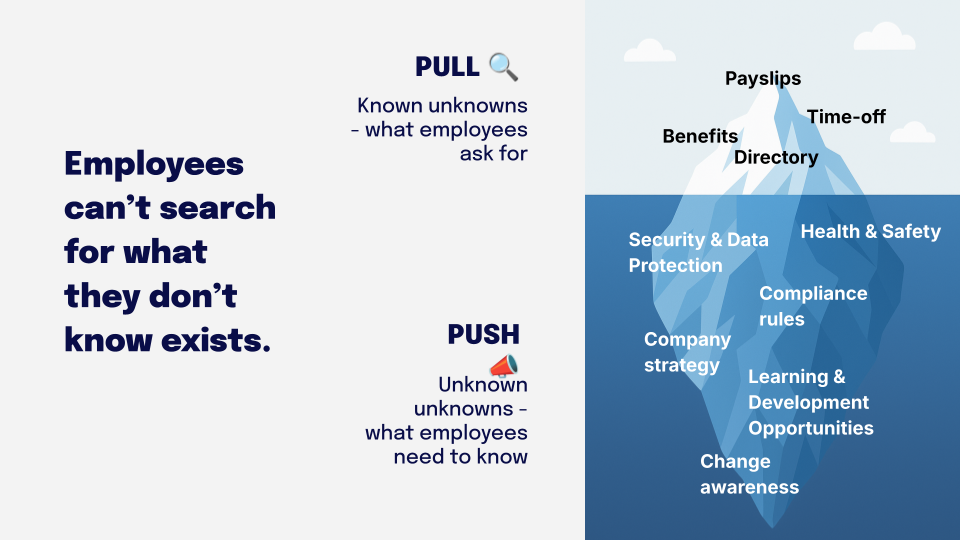 Employees ask for what they know — but the biggest risks come from what they don’t. Intelligent push bridges the gap, proactively delivering critical information on security, compliance, and safety that employees may never think to search for.
Employees ask for what they know — but the biggest risks come from what they don’t. Intelligent push bridges the gap, proactively delivering critical information on security, compliance, and safety that employees may never think to search for.
According to recent studies, 30% of compliance violations happen because employees don’t know the rules. And 82% of data breaches involve a human element. These aren’t search failures — they’re communication failures. Closing the gap requires more than responsive AI. It demands proactive communication that reaches employees before something goes wrong.
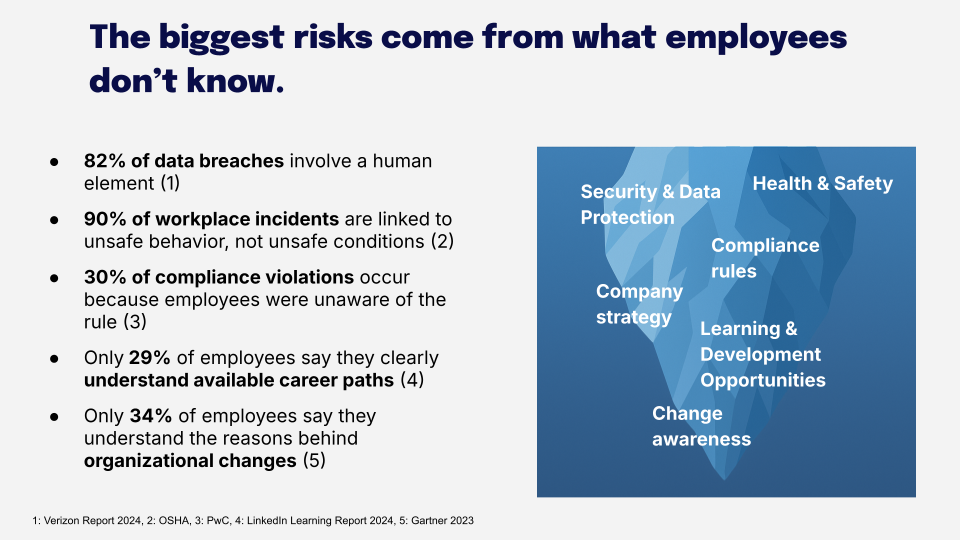 The real risk is what employees don’t know. Intelligent push helps close the gap by proactively delivering critical information.
The real risk is what employees don’t know. Intelligent push helps close the gap by proactively delivering critical information.
This is where a “chatbot only” approach will miss the mark. For many HCM (human capital management) vendors, their AI strategies for employee experience focus on operational needs alone: sick leave, PTO requests, payroll questions. At Staffbase, we believe employee experience should be more than transactional answers. It should help HR leaders proactively drive strategic initiatives — not by simply surfacing information, but by delivering it directly to the right people, at the right moment, in the right format. Whether it’s updates on security, compliance, culture, or change, companies need a way to push information to employees in order to drive strategy, culture, and change.
Formats like our AI-powered internal podcast exemplify this approach. It makes it easy to deliver high-value, personalized content to the right employees — from frontline workers to people managers — while still giving HR leaders control over timing, tone, and message integrity.
In short: conversational interfaces are a step forward in employee experience, but they alone are not enough.
5. AI governance begins with content integrity
As AI becomes an intermediary between employees and information, the integrity of your content becomes a strategic asset — or a hidden liability. Unleash 2025 surfaced a simple but critical truth: if your internal data is inconsistent, duplicative, or out of date, AI will surface confusion instead of clarity.
The old IT adage “garbage in, garbage out” has never been more relevant. Employees won’t trust AI if the answers it gives are wrong. And once trust is lost, even the most powerful tools go unused.
Frank Wolf illustrated how Staffbase is helping organizations build the infrastructure needed for quality answers: enforcing messaging standards, supporting AI-powered governance, and creating a single source of truth across platforms and channels. This isn’t just content management, it’s the foundation of reliable automation.
Without a governance layer that aligns people, processes, and platforms, conversational tools will struggle to deliver real value.
6. HR and IT are joining forces to create more humane digital experiences
Another clear trend at Unleash was the growing collaboration between HR and IT — especially when it comes to designing and delivering the employee experience in an AI-enabled world. With digital tools now touching every part of how work gets done, the line between people strategy and technology strategy is fading fast.
Moderna is one of the first companies to formalize this shift. In 2025, they merged their HR and IT functions under a single leadership role: Chief People and Digital Technology Officer Tracey Franklin. Her mandate now spans global talent strategy and enterprise AI deployment, all with the goal of creating a more agile, integrated, and human-first approach to work.
Read how Moderna is rethinking work planning and AI deployment →
This restructuring sends a powerful signal: HR is taking a leading role in AI implementations, not just to ensure adoption, but to safeguard trust, ethics, and inclusivity.
That sentiment was echoed in Microsoft’s session, which positioned the Employee Experience Organization as a cross-functional partnership between HR and Tech. Their formula for impact? Frictionless experiences. Trusted by design, always-on reliability, and continuous innovation. In short, delivering world-class EX now requires shared ownership across functions — and shared outcomes.
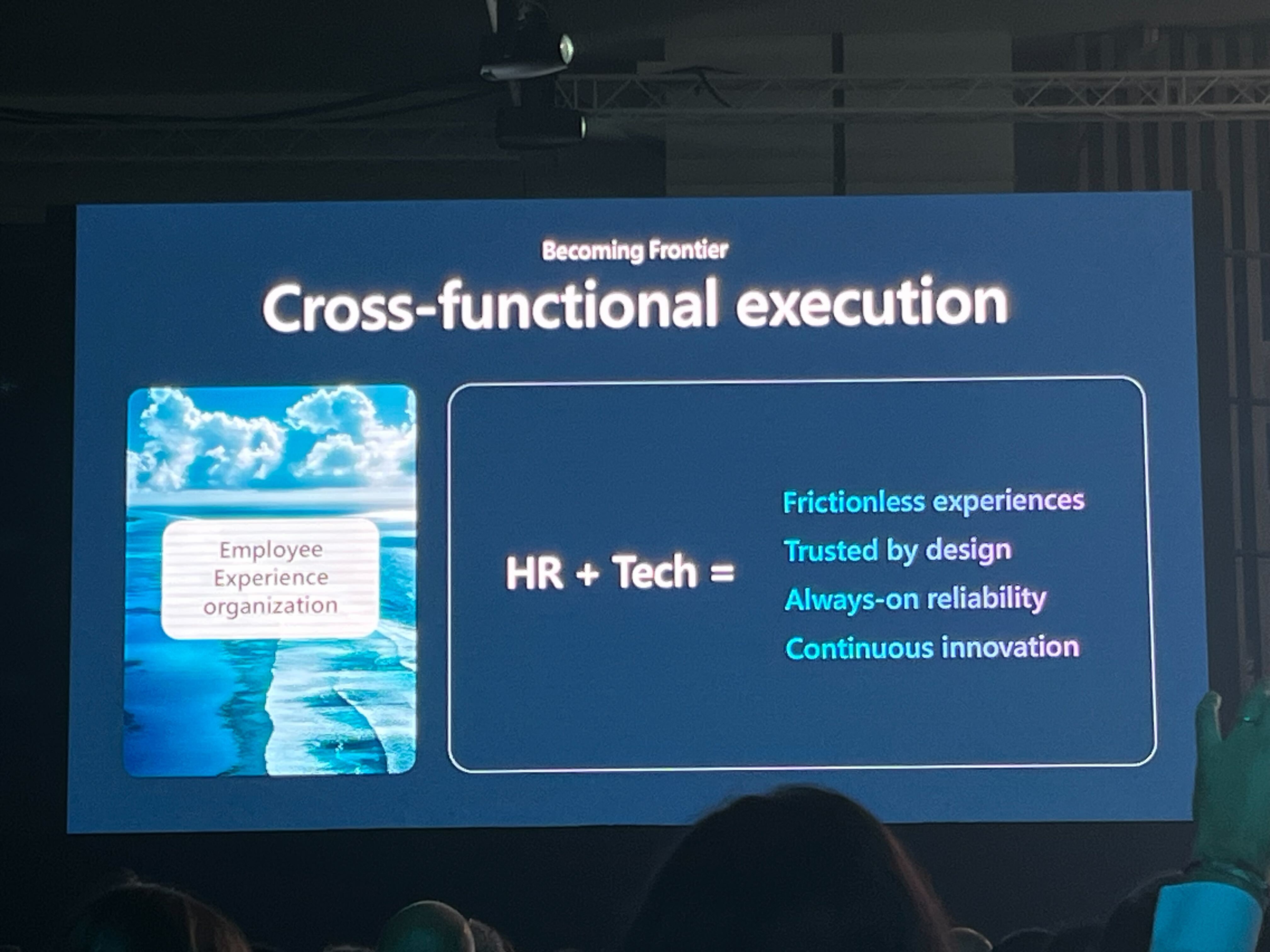 Microsoft at Unleash 2025 on the power of HR + Tech collaboration to drive a new model for employee experience.
Microsoft at Unleash 2025 on the power of HR + Tech collaboration to drive a new model for employee experience.
Final thought: The vision is clear. The path isn’t.
Unleash Paris 2025 revealed a profession in transition. HR leaders are being asked to think bigger: to shape digital strategy, steward AI adoption, and maintain humanity in increasingly automated workplaces.
But vision alone won't close the gap between aspiration and execution. It will take new partnerships between HR and IT. It will take governance. And above all, it will take a recommitment to clear, inclusive communication.
That’s where the next evolution of employee experience will be won — with better connection between people, platforms, and purpose.

